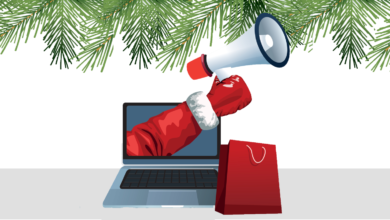What Is A Conversion Funnel? Optimize Your Customer Journey

Conversion funnels are essential for any business looking to increase sales and increase customer engagement.
By analyzing each step of the conversion funnel, companies can identify opportunities to improve their efforts and convert more leads into customers for life.
Customers take a unique journey through your company’s transformation path when they make a purchase decision. Therefore, you must capture their attention, form trusting relationships, and motivate them to move forward.
Mastering the customer journey is essential to success in any business – especially online – and funnels are an important tool.
What is a conversion path
As a marketer or salesperson, you help people on their journey to becoming a customer.
Conversion funnels, sometimes known as sales funnels, provide a practical framework for this process by allowing potential buyers to progress through various steps until they take the desired action: making a transaction or purchasing.
A good conversion funnel gives insight into where your visitors and target audience are coming from, what they do while on your site, and what happens when they convert.
You can use this information to improve your marketing efforts and increase conversions. To learn more about target audiences and how to find them, you can read this article.
Marketers can use conversion funnels to track the path that leads consumers from initial interest to final purchase.
Understanding clear progress along a customer’s digital journey allows you to identify opportunities to influence each step.
Creating conversion paths helps in planning campaigns.
For example, a retailer may want to know if a particular advertising campaign or organic search resulted in more traffic or purchases. With a conversion funnel, marketers can see how many people reached through different online channels, what steps they took online, and ultimately what happened when they converted.
The digital customer journey
Every customer’s journey with the company is unique.
From the moment they become familiar with your brand to the successful completion of their goal, they take many steps – each requiring customized approaches from internal perspectives to maximize success.
Understanding and optimizing these customers’ journeys allows you to provide an experience that will bring them back time and time again.
More customer journeys are taking place online, and 80% of consumers consider the experience as important as products and services. As a result, you must understand consumer behavior online and reward consumers with the right digital experiences.
In particular, the days of linear flights with sequential connection points (A to B) relative to the digital system are over.
Instead, as consumer behavior changes, the journeys are often fragmented across different online channels and stages of the buyer’s journey.
Conversion models and analysis
There are many types of conversion funnel models that organizations use. They all depend on the type of business and type of client.
It can also vary, with marketing and sales sometimes having slightly different models.
The two main ones I’m going to explain today are the AIDA model and the Top, Middle and Bottom (TOFU) model – both are similar.
AIDA is mainly used by marketers, and TOFU by sellers. However, they are not mutually exclusive.
In this funnel, consumers go through four distinct checkpoints as they prepare to buy.
Keeping up with the kinds of searches and interests that drive them at every step paves the way for useful posts along their path.
In addition, you can form lasting relationships that lead to a final sale by crafting content tailored to your customers’ needs.
consciousness
The first step in any type of funnel is to attract visitors. And that could mean getting someone’s attention, whether that’s through search engine optimization, paid advertising, or social media posts.
Once you start attracting leads, you want to keep them engaged. You can use email marketing campaigns, popups, or even retargeting ads to encourage them to take the next step.
To keep these visitors engaged, informative and comprehensive content is ideal. Articles that explore the topic in depth, as well as infographics or videos, can help hold their attention for longer periods.
SEO is a great way to discover intent-based queries to help plan digital content that raises awareness and is discoverable.
interest
Once people are interested in your product or service, you’ll need to convert those leads into sales. This is where things get tricky.
Depending on your business model, there are many different ways to do this.
wishes
You are trying to convince potential customers to buy at this point. You can offer free trials, discounts or special promotions. Or you can try selling to them directly.
Either way, once you convince them to buy something, you need to move them all the way towards buying.
an act
Finally, you need to close the sale. Whether you sell physical goods or digital downloads, this is the part where you collect payment and ship the item.
Suppose you sell a subscription plan; You may send reminders to remind buyers to renew. And if you’re offering software as a service, you likely offer phone or chat support.
Upper, middle and lower conversion funnels – TOFU, MOFU and BOFU
A more simple version, often used by sales and marketing when tracking and reporting, is the top, middle, and bottom conversion funnel.
Top funnel (TOFU): awareness
This includes using and optimizing digital assets such as:
- blog posts.
- Webinars.
- videos.
- Social media.
- Search.
- electronic books.
The content in this part of the funnel should be informative and informative to make new potential customers aware of your products or services.
Mid-Funnel (MOFU): Participation and Evaluation
This includes the use and improvement of:
- Case studies.
- Social media.
- Paid media.
- e-mail.
Content in this part of the funnel should focus on engaging consumers to move them into evaluation or consideration.
Bottom of the Funnel (BOFU): Transformation
This includes the use and improvement of:
- offers.
- Sales guarantee.
- Testimonials and case studies for validation.
- product sheets.
- Shopping carts (e-commerce).
- Competitive battle cards.
Content in this part of the funnel should focus on validating your product and services to move them from consideration to conversion.
Read more about SEJ: Here’s your complete B2B multichannel strategy in 5 simple steps
Optimize content for conversion and the customer journey
Conversion is a call-to-action that invites a potential customer to give you some information so that you can deepen your engagement with them on a 1:1 basis and make greater progress in the sales process.
Consciousness – the pinnacle of oppression
Many marketers still measure the effectiveness of content based on its ability to drive website traffic.
However, the best way to measure the success of your content is based on conversion.
Therefore, content needs to drive some form of conversion along the buyers journey.
- If you want to maximize conversions, focus your efforts on the areas that are actually driving traffic. Then, create content that can really grab their attention and leave a lasting impression.
- Curate content tailored to the interests of your target audience Instead of looking for quantity over quality using generic posts.
- Leverage metrics beyond likes and views to measure the effectiveness of your content. Monitor comments, posts, time spent on the site, and pages visited to get an in-depth look at how audiences ultimately interact with what you’ve shared.
Participation and evaluation – the middle of the funnel
After you’ve gained your audience’s focus, now the challenge is to retain it.
Seize this opportunity and make an impact. Despite creating content that resonates with readers, many companies still struggle to achieve their desired conversions.
Creating engaging copy is crucial; However, taking it a step further and focusing on crafting tailored content that is beneficial to the user helps produce tangible results.
It’s not always easy to take action, especially when there are three big roadblocks on the road.
- People may not need your product or service to date.
- Funding can be an issue also.
- Trust must be earned before making any commitment.
A funnel, no matter how carefully designed, is doomed to fail without useful pointers along the way.
These tags can include information such as what happens once a customer takes action or when they can receive their initial communication from you – confirmation emails, newsletters with exclusive offers, or limited stock in terms of urgency.
To create a sense of urgency and motivate people to act quickly:
- Consider special discounts or limited time offers.
- Make sure potential customers trust your product by taking advantage of reviews From credible third parties and testimonials on how they outperform the competition.
- Complement this with an honest guarantee This relaxes their minds.
Conversion – the bottom of the funnel
In the final step of their journey, this is when clients make a crucial decision: to convert or not.
Your BOFU strategies give them the extra boost they need to become loyal to your brand in the long term by offering personalized messaging based on what aligns with each potential customer’s needs and interests.
Grab their attention one last time – use compelling arguments as clear incentives for why they should choose you over the competition today.
- Give your visitors a chance to get a first-hand experience For what you offer with a chance to get a free trial or demo.
- Make sure to provide guides To ensure that potential customers are well-equipped with all the necessary information and advice to make a purchasing decision.
- Showcase your customers’ success and let them do the talking Customer reviews and testimonials are invaluable assets that go a long way in building trust right up to closing.
Read more on SEJ
- 5 tips to improve your content strategy
- Conversion Rate Optimization (CRO): How to Get Started
Research the customer journey and conversion funnel
From providing insights into what consumers are searching for and understanding content intent, SEO helps at all stages of the buyers journey.
To effectively reach and engage modern customers, brands must understand the complexity of consumer intent.
This research expands beyond marketing tactic to a broad discipline that includes conversion funnel optimization and customer experience management, enabling a more powerful connection between business and consumer – and conversion.
More resources:
- 5 value-added benefits of SEO for your organization
- Here’s your complete B2B multichannel strategy in 5 simple steps
- How search engines work
Featured image: Black Salmon/Shutterstock




